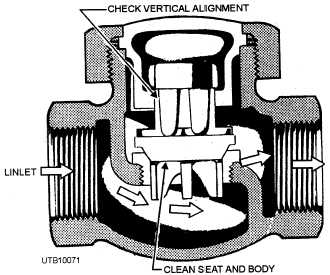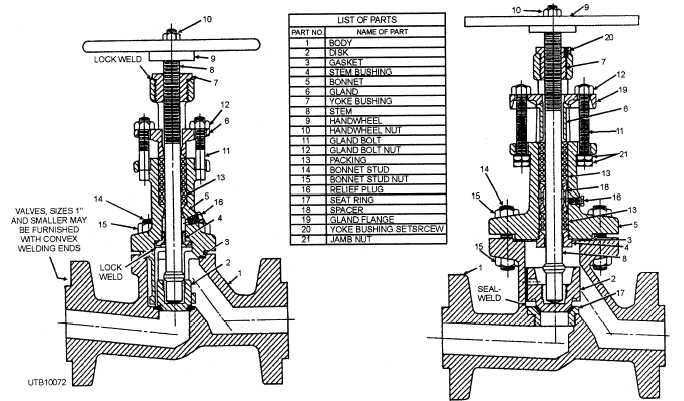
Figure 4-6. - Lift-check valve.
Ball-check valves handle viscous fluids and are very efficient in lines that contain scale and other debris. Because the ball-check valve operates quietly, it is recommended for use in lines that contain fluids where pressure changes rapidly.
STOP-CHECK VALVE
As we have seen so far, most valves are classified as either stop valves or check valves; however, some valves function either as a stop valve or as a check valve, depending upon the position of the valve stem. These valves are known as STOP-CHECK VALVES.
The cross section of two stop-check valves is shown in figure 4-7. As you can see, this type of valve looks much like a lift-check valve. The valve stem is long enough so when it is screwed all the way down, it holds the disk firmly against the seat, thereby preventing the flow of any fluid. In this position, the valve acts as a stop valve. When the stem is raised, the disk can then be opened by pressure on the inlet side. In this position, the valve acts as a check valve and allows the flow of fluid in one direction only. The amount of fluid allowed to pass through is regulated by the opening. The opening is adjusted by the stem.
PRESSURE-REDUCING VALVE
Pressure-reducing valves are automatic valves used to provide a steady pressure lower than that of the supply pressure. Pressure-reducing valves can be set for any desired discharge pressure that is within the limits of the design.
Several types of reducing valves are used in the Navy; however, you will be working mostly with those in the water service system. These are normally single-seated, direct-acting, and spring-loaded, as shown in figure 4-8. Water passing through this valve

Figure 4-7. - Step-check valve.
Continue Reading